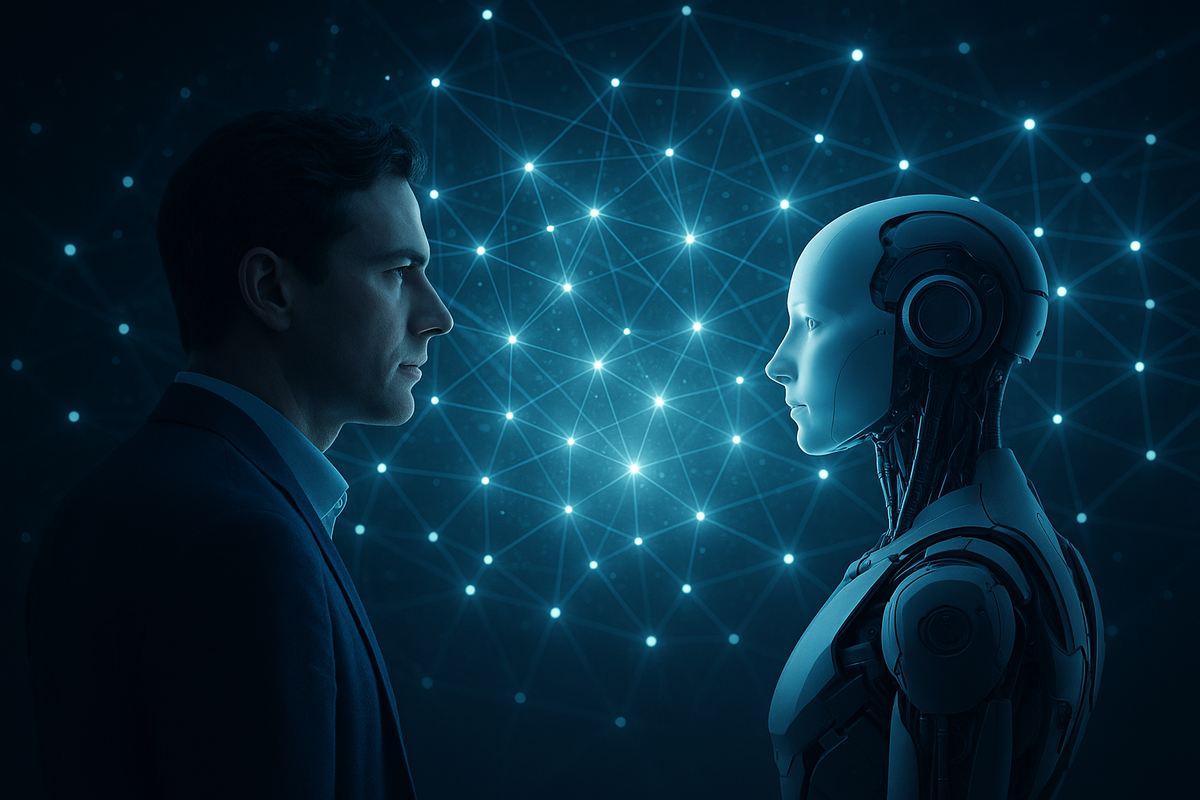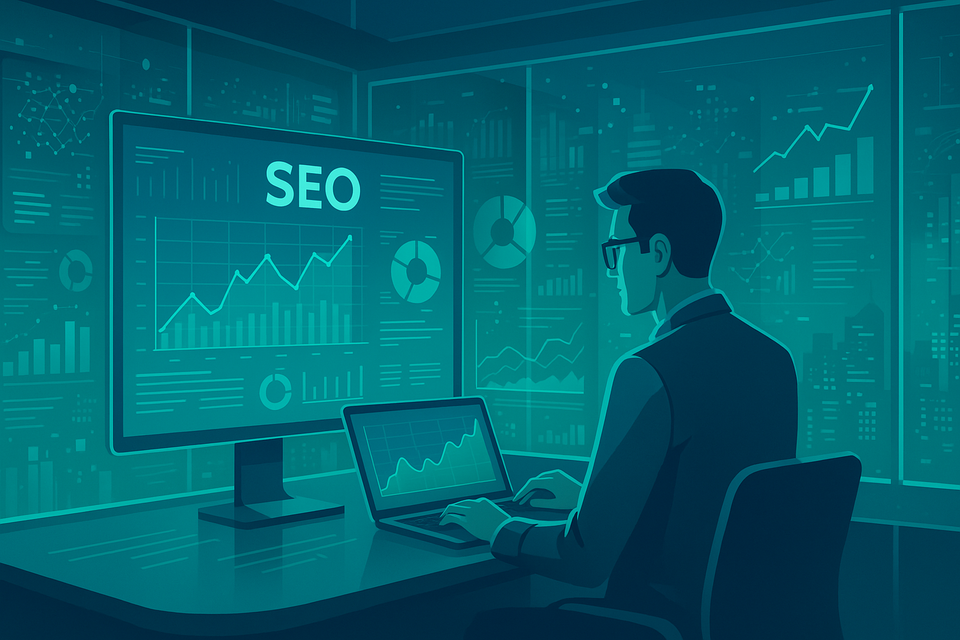The Future of Technology: Thinking With Machines, Not Against Them
Technology is no longer just a tool — it’s a thinking partner. The next decade won’t be defined by faster machines, but by how humans think with them.

Technology has always been a mirror.
It reflects how we think, how we build, and what we value.
For decades, it was a set of tools — designed to make life easier, faster, more efficient.
But that era is ending.
We are now entering a world where technology doesn’t just do what we say.
It begins to think alongside us.
The question is no longer:
“How can we make machines smarter?”
It’s:
“How can we become smarter through them?”
⚙️ 1. From Automation to Augmentation
For most of modern history, innovation meant automation.
The goal was simple: replace human effort with mechanical precision.
Factories ran smoother.
Data moved faster.
Decisions scaled better.
But AI has shifted the focus from automation to augmentation.
Automation says, “Let me do that for you.”
Augmentation says, “Let’s think about this together.”
That difference seems small, but it’s revolutionary.
AI systems today can analyze complex data patterns, recognize images, translate languages, and even write. But the most important breakthrough isn’t what AI does — it’s what it enables humans to do.
When used right, AI becomes an amplifier of human capability.
It expands attention, creativity, and decision-making.
Instead of taking our work, it takes our routine — freeing our focus for strategic thinking and innovation.
The next evolution of progress won’t come from machines replacing us.
It will come from machines expanding what we can imagine.
🧠 2. The Human Edge: Strategic Thinking
AI can identify every possible move.
But it still needs humans to choose why one move matters.
That’s the irreplaceable human advantage — strategic thinking.
AI operates on probabilities.
Humans operate on purpose.
This is what separates intelligence from wisdom.
In every organization, in every industry, leaders will face the same challenge:
How do we use AI not just to speed up processes, but to sharpen decisions?
Because speed without direction isn’t progress — it’s chaos.
The best leaders of the next decade won’t be the ones who use AI the most.
They’ll be the ones who understand where AI fits in the story.
They’ll combine technology’s capacity for precision with humanity’s capacity for meaning.
AI gives you answers.
Strategy tells you which questions are worth asking.
🌐 3. Systems, Not Silos
The old corporate model was built on separation — departments, roles, and hierarchies.
But the new economy runs on systems, not silos.
AI accelerates this shift because it connects everything.
Your CRM, ERP, data warehouse, and marketing analytics — once isolated — now speak a common language.
This creates what I call the “flow organization”:
a business that doesn’t just store information, but moves it seamlessly across every process.
When systems talk to each other, innovation compounds.
When they don’t, progress dies in meetings.
AI acts as the translator. It makes data interoperable. It makes departments collaborative. It makes organizations truly intelligent.
The best tech leaders understand this isn’t an IT issue — it’s a business philosophy.
A connected system outperforms a disconnected genius every time.
🔄 4. The New Role of the Human: System Architect
In the industrial age, productivity meant doing more.
In the AI age, productivity means designing how more gets done.
Humans are evolving from task performers to system architects.
We’re no longer the workers in the machine — we’re the ones who design the machine.
That’s a massive mental shift.
It means learning how to structure processes, connect APIs, automate tasks, and orchestrate workflows — not necessarily by coding everything, but by understanding how everything connects.
That’s why no-code and low-code tools are exploding.
They give thinkers the power to execute.
A new generation of professionals is emerging — people who combine business logic, creativity, and technical fluency.
You don’t need to be a developer to think like one.
You need to think in systems, not silos.
🤝 5. The Rise of Cognitive Collaboration
We’re witnessing the birth of cognitive collaboration — humans and machines working together in real-time, each amplifying the other’s strengths.
AI copilots, assistants, and autonomous agents are becoming the new teammates.
They take care of the predictable so you can focus on the exceptional.
But here’s the catch: collaboration requires leadership.
You have to train AI the same way you train people — by giving it context, goals, and feedback.
A machine can process data, but it can’t sense intent.
That’s the human’s job.
The best results come not from automation alone, but from the conversation between human and machine:
- You prompt it.
- It generates.
- You refine.
- It adapts.
That loop is where creativity and intelligence merge.
AI doesn’t replace your mind — it extends it.
Every great team in the future will have humans who think strategically,
and AI systems that execute flawlessly.
🔍 6. The Ethical Compass: Power and Responsibility
Every leap in technology brings a shadow of risk.
The more powerful our tools become, the more discipline we need to use them wisely.
AI can scale truth — or misinformation.
It can empower creativity — or amplify bias.
It can democratize access — or deepen inequality.
The difference lies in the human intent guiding it.
Ethics isn’t a compliance checkbox anymore; it’s a competitive advantage.
Companies that lead with transparency, fairness, and accountability will earn trust — the most valuable currency of the digital future.
We can’t just build smarter systems.
We have to build systems that make us smarter — more thoughtful, empathetic, and aware.
The future isn’t about whether AI can do something.
It’s about whether it should.
📈 7. Rethinking Education and Work
As AI reshapes industries, education must evolve too.
The next generation doesn’t need to memorize facts — it needs to learn how to ask better questions.
The value of knowledge is shifting from storage to synthesis.
Anyone can access information.
The real skill is connecting it meaningfully — across disciplines, tools, and perspectives.
That’s why future-ready education must combine:
- Critical thinking (to interpret data)
- System thinking (to connect processes)
- Ethical reasoning (to guide decision-making)
- Creative problem-solving (to imagine new possibilities)
In the AI era, lifelong learning isn’t optional.
It’s the operating system of human growth.
🧩 8. Leadership in the AI Era
Traditional leadership was built on control.
Modern leadership is built on clarity.
You can’t manage AI.
You guide it.
You set goals, boundaries, and principles — and let the systems adapt.
This requires a shift from micromanagement to orchestration.
The best leaders will be translators — people who can bridge human insight and machine logic.
They’ll know how to ask:
- What should be automated?
- What must remain human?
- Where do we draw the line between efficiency and empathy?
Leadership in the AI era is not about control — it’s about coordination.
Those who understand both people and technology will become the architects of the next digital civilization.
🔧 9. The Technology of Simplicity
As AI makes everything faster and more complex, simplicity becomes the ultimate sophistication.
The future of great design — in software, systems, or strategy — is clarity.
The best products will be the ones that make technology invisible.
You’ll know a system is well designed when users don’t have to think about it.
AI should never be the headline — it should be the infrastructure.
The silent intelligence beneath every action.
That’s the paradox of progress:
As technology becomes more powerful, the most valuable experience is effortless simplicity.
Simplicity isn’t the opposite of sophistication — it’s the highest form of it.
🌍 10. Building a Human-Centered Future
Despite all the innovation, the ultimate goal of technology hasn’t changed:
to serve humanity.
AI is not the protagonist of the story — we are.
Our mission isn’t to compete with machines, but to create systems that expand human potential — in education, creativity, health, and business.
That means designing technology that respects attention, protects privacy, and empowers individuals to grow.
Human-centered AI isn’t a moral option — it’s a strategic necessity.
Because in a world where everything can be automated, empathy becomes the last true competitive advantage.
🕯️ Conclusion: Thinking With the Machine
The 20th century was about learning how to use technology.
The 21st is about learning how to think with it.
We’re standing at the intersection of logic and imagination —
where AI amplifies intelligence, and humans guide its purpose.
The organizations that thrive will be the ones that blend strategy with systems,
creativity with data, and technology with humanity.
AI is not a finish line.
It’s the next language of leadership.
The future doesn’t belong to those who build the fastest machines.
It belongs to those who can think with them.
#AI #Technology #Future #Leadership #Innovation #Mindset #BusinessDevelopment #Strategy #Automation #Augmentation #DigitalTransformation




